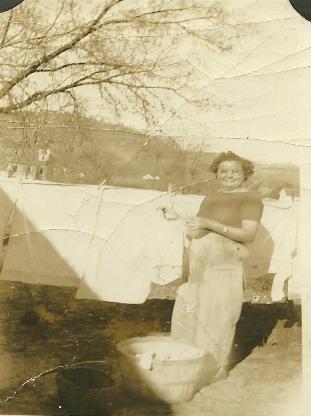
Gays Mills Wisconsin- In the Heart of the Kickapoo Valley
In Remembrance of those now passed and the stories they left behind. May they and
their stories never be forgotten.
Mary L. Coleman Sutherland
HOME PAGE
In Remembrance of those now passed and the stories they left behind. May they and
their stories never be forgotten.
Mary L. Coleman Sutherland
HOME PAGE
| Dorothy Callaway Coleman The Good Ol' Days. Said to have had the whitest sheets in town. Fortunately she had a wringer washer which wasn't quite so bad as tub washing like her mother and grandmothers did. yet still had to hang wet clothes outdoors where in the winter months froze stiff as a board and the women's hands would be chafed from the cold. A few times she got her fingers caught up in the wringer and busted a few joints in her fingers, The wringers were not safe at all. Later manufacturers implement a safety release switch . Click photo for enlargement |
| Purchase your e-magazine featuring The Kickapoo Valley at burlingtonnews.net/Legends.html |
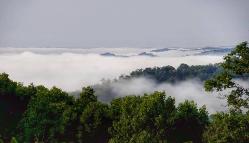
This may look like the Smokey Mountains but Crawford and Richland County has mountains of their own known as the 'Ocooch Mountain Range'. If you have ever been in this
area, you will quickly recognize it as 'God's Country'. Courtesy of Historical and Architectural Tours of Richland Center
area, you will quickly recognize it as 'God's Country'. Courtesy of Historical and Architectural Tours of Richland Center
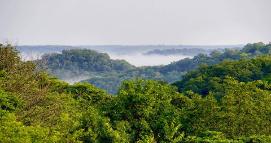

| Brought to you by Legends Magazine - In Search of Legend and Lore . Every Town Has it's own Story Another Sutherland Production Dedicated to James and Dorothy Coleman - Gays Mills Residents burlingtonnews.net/Legends.html |




| Contact Us Legends Magazine 248 Carver Street - Winslow Illinois 61089 bsutherland@wi.rr.com 608 214 6800 or 815 367 1006 HOME PAGE |
Gays Mills Nestled in the Midst of the Ocooch Mountain Range
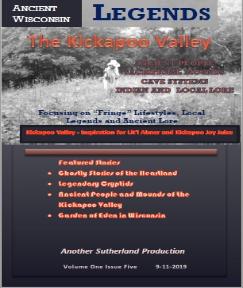
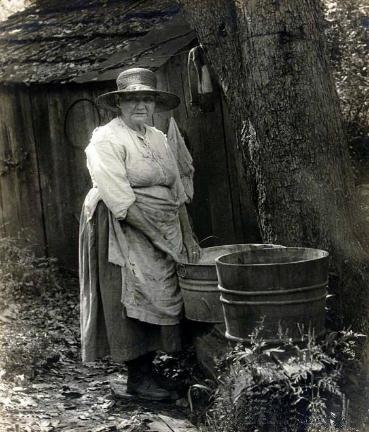
"Warshing Clothes Recipe"
Years ago a grandmother gave the new bride the following recipe:
This is an exact copy as written and found in an old scrapbook, spelling errors and all.
WARSHING CLOTHES
Build fire in backyard to heat kettle of rain water. Set tubs so smoke wont blow in eyes if
wind is pert.
Shave one hole cake of lie soap in boilin water.
Sort things, make 3 piles
1 pile white,
1 pile colored,
1 pile work britches and rags.
To make starch, stir flour in cool water to smooth, then thin down with boiling water.
Take white things, rub dirty spots on board, scrub hard and boil, then rub colored don't
boil just wrench and starch.
Take things out of kettle with broom stick handle, then wrench, and starch.
Hang old rags on fence.
Spread tea towels on grass.
Pore wrench water in flower bed. Scrub porch with hot soapy water.
Turn tubs upside down.
Go put on clean dress, smooth hair with hair combs. Brew cup of tea, sit and rock a
spell and count your blessings.
Ruthie Peterson I've used lye soap,a scrub board, boiled clothes in a cast iron kettle.
We used blueing to get whites whiter. We carried water from a spring. Wash day was
usually on Monday. I thank God for modern conveniences. I'm in my 70s and seen a lot
of changes. The old days were hard but we slept good at night.
Theresa Kelso I’m 61, my Mom had running water and a wringer washer and 2 rinse
tubs! Thank God! That was hard enough. When she got a washer and dryer I was so
happy, plus in the “wash house” you had to watch for snakes!
Maggie Sorrels to Ruthie Peterson - that's how red beans on Monday got started in
Louiisiana. They'd be put on to cook low in the morning. Ready to eat that night.
Julie Porter Lavender or any fragrant flower was grown so they could drape sheets ,
handkerchiefs ,pillow cases over them as the dried ,this helped the perfume from the
flower to absorb into the fabric .
Dee Mathis My grandma made lye soap and washed on a scrub board while she lit the
coal lamp and cooked on a wood stove and also had an outhouse.
Linda Downing Young people need to know about this! Wash day used to be an all day
chore! My grandmothers had their washtubs on the back porch !! We never knew how
hard they had to work to keep our clothes cleaned and ironed
Sue Yancey I can remember helping my grandma on wash day. She had 13 kids, so
wash day was a hard days work. She started at daylight, can remember hearing her
carry in wood to build a fire in the cook stove. Always had a big breakfast for the family
before we started the wash. I would start carrying the water from the spring while she
made breakfast, while one of the older boys would build a fire to heat water and help
carry more water. I would help with the breakfast dishes they would have to be washed
in between shifts at the table. Grandpa and the men ate first, kids were last. But
grandma would always keep me a biscuit and some bacon warm while everyone ate.
Said she had to make sure her best helper was fed. Then a full day of "warshin"
started. Can remember getting my hand caught in the wringer, only did that once. I
wasn't the only one, I guess all the kids did at one time or another. After the clothes
were finally done and put away, she would say it's time to pay the help. She would take
me in her bedroom and my pay would a piece of candy she had hid in her dresser
drawer. Some of my best memories of grandma were around that old wringer washer. I
really miss wash day with grandma. I have my own wringer washer now, just to share
wash day with my grandkids every once in awhile. Don't miss the lye soap though.
Barbara Rice My uncle ate a cake of lye soap as a baby. Closed his throat. My gramma
used increasing in size beads to widen his throat back to normal...she would make
him swallow the bead & pull it back & forth. The next day a little larger bead....he lived!
Years ago a grandmother gave the new bride the following recipe:
This is an exact copy as written and found in an old scrapbook, spelling errors and all.
WARSHING CLOTHES
Build fire in backyard to heat kettle of rain water. Set tubs so smoke wont blow in eyes if
wind is pert.
Shave one hole cake of lie soap in boilin water.
Sort things, make 3 piles
1 pile white,
1 pile colored,
1 pile work britches and rags.
To make starch, stir flour in cool water to smooth, then thin down with boiling water.
Take white things, rub dirty spots on board, scrub hard and boil, then rub colored don't
boil just wrench and starch.
Take things out of kettle with broom stick handle, then wrench, and starch.
Hang old rags on fence.
Spread tea towels on grass.
Pore wrench water in flower bed. Scrub porch with hot soapy water.
Turn tubs upside down.
Go put on clean dress, smooth hair with hair combs. Brew cup of tea, sit and rock a
spell and count your blessings.
Ruthie Peterson I've used lye soap,a scrub board, boiled clothes in a cast iron kettle.
We used blueing to get whites whiter. We carried water from a spring. Wash day was
usually on Monday. I thank God for modern conveniences. I'm in my 70s and seen a lot
of changes. The old days were hard but we slept good at night.
Theresa Kelso I’m 61, my Mom had running water and a wringer washer and 2 rinse
tubs! Thank God! That was hard enough. When she got a washer and dryer I was so
happy, plus in the “wash house” you had to watch for snakes!
Maggie Sorrels to Ruthie Peterson - that's how red beans on Monday got started in
Louiisiana. They'd be put on to cook low in the morning. Ready to eat that night.
Julie Porter Lavender or any fragrant flower was grown so they could drape sheets ,
handkerchiefs ,pillow cases over them as the dried ,this helped the perfume from the
flower to absorb into the fabric .
Dee Mathis My grandma made lye soap and washed on a scrub board while she lit the
coal lamp and cooked on a wood stove and also had an outhouse.
Linda Downing Young people need to know about this! Wash day used to be an all day
chore! My grandmothers had their washtubs on the back porch !! We never knew how
hard they had to work to keep our clothes cleaned and ironed
Sue Yancey I can remember helping my grandma on wash day. She had 13 kids, so
wash day was a hard days work. She started at daylight, can remember hearing her
carry in wood to build a fire in the cook stove. Always had a big breakfast for the family
before we started the wash. I would start carrying the water from the spring while she
made breakfast, while one of the older boys would build a fire to heat water and help
carry more water. I would help with the breakfast dishes they would have to be washed
in between shifts at the table. Grandpa and the men ate first, kids were last. But
grandma would always keep me a biscuit and some bacon warm while everyone ate.
Said she had to make sure her best helper was fed. Then a full day of "warshin"
started. Can remember getting my hand caught in the wringer, only did that once. I
wasn't the only one, I guess all the kids did at one time or another. After the clothes
were finally done and put away, she would say it's time to pay the help. She would take
me in her bedroom and my pay would a piece of candy she had hid in her dresser
drawer. Some of my best memories of grandma were around that old wringer washer. I
really miss wash day with grandma. I have my own wringer washer now, just to share
wash day with my grandkids every once in awhile. Don't miss the lye soap though.
Barbara Rice My uncle ate a cake of lye soap as a baby. Closed his throat. My gramma
used increasing in size beads to widen his throat back to normal...she would make
him swallow the bead & pull it back & forth. The next day a little larger bead....he lived!
| Photo credit: Mrs. Bostain washing clothes, vicinity of Penland, N.C. ca. 1930 Bayard Morgan Wootten Photographic Collection, University of North Carolina. |
Kickapoo River Valley is one of the oldest river
systems in the world.
At 125 miles, the Kickapoo River is the longest tributary of the
Wisconsin River, meandering from its source in Wilton to Wauzeka,
where it joins the Wisconsin. The proverbial crow flying between these
two towns would only cover 65 miles. But Kickapoo is an Algonquin
word meaning “one who goes there, then here,” an accurate description
of a river that manages to flow north, south, east and west for some
portion of its 125 mile length. Because the glaciers that missed the
Driftless Area did not change its natural course, the Kickapoo River
Valley is one of the oldest river systems in the world.
Rising some 350 feet above the river are the Ocooch Mountains, named
for a small band of Indians called the Ocoche who once made these
hills home. The “mountains” are really a region of forested hills, lush
valleys and sandstone cliffs
systems in the world.
At 125 miles, the Kickapoo River is the longest tributary of the
Wisconsin River, meandering from its source in Wilton to Wauzeka,
where it joins the Wisconsin. The proverbial crow flying between these
two towns would only cover 65 miles. But Kickapoo is an Algonquin
word meaning “one who goes there, then here,” an accurate description
of a river that manages to flow north, south, east and west for some
portion of its 125 mile length. Because the glaciers that missed the
Driftless Area did not change its natural course, the Kickapoo River
Valley is one of the oldest river systems in the world.
Rising some 350 feet above the river are the Ocooch Mountains, named
for a small band of Indians called the Ocoche who once made these
hills home. The “mountains” are really a region of forested hills, lush
valleys and sandstone cliffs
| Pictures during these times were rare and far in between. So to help create the story line of Gays Mills and its people I use first original photos from Gays Mills area, then photos I may find in historical societies and photos and videos Brad and I may take while visiting museums |
I found some of the old wash tubs and wash machines in the Monroe Historical Museum.
Click video and check out some of the various items I filmed dating back to yesteryears.
Click video and check out some of the various items I filmed dating back to yesteryears.
The 33rd Wisconsin Infantry of Wisconsin - Civil War History
The 33rd Infantry, organized under Colonel Moore, at Camp Utley in Racine, WI was
mustered into service on October 18, 1862. Men were recruited principally from the
Counties of Crawford, Grant, Kenosha, Rock and Lafayette.
From the Gays Mills, WI area, Crawford County, my Gt. Grandfather, James Coleman, heard
the call and joined the 33rd. He was mortally wounded in the Battle of Tupelo, Mississippi.
The 33rd Infantry, organized under Colonel Moore, at Camp Utley in Racine, WI was
mustered into service on October 18, 1862. Men were recruited principally from the
Counties of Crawford, Grant, Kenosha, Rock and Lafayette.
From the Gays Mills, WI area, Crawford County, my Gt. Grandfather, James Coleman, heard
the call and joined the 33rd. He was mortally wounded in the Battle of Tupelo, Mississippi.
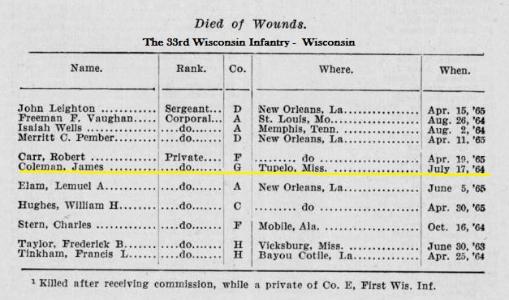
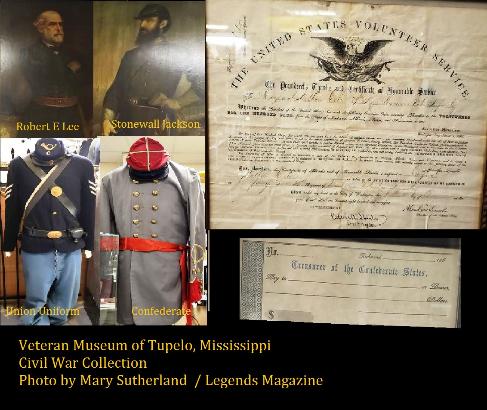
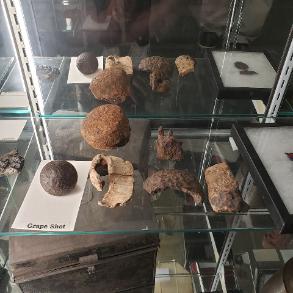
After hearing the story of my gt. Grandfather wounded in Tupelo, later dying from his
wounds, Tony Lute, owner of Tupelo Veterans Museum gave me the grape shot that was
found in the battlefield my gt. Grandfather, James Coleman,was wounded in.
Photo of Grape Shot seen in photo to left of Tony.
wounds, Tony Lute, owner of Tupelo Veterans Museum gave me the grape shot that was
found in the battlefield my gt. Grandfather, James Coleman,was wounded in.
Photo of Grape Shot seen in photo to left of Tony.
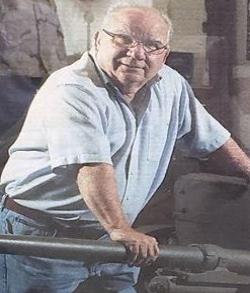
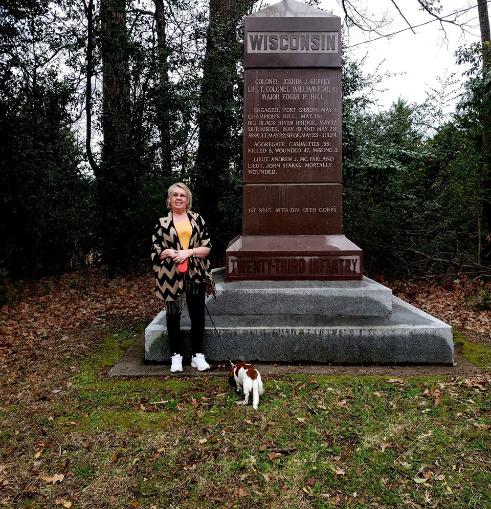
| Mary Sutherland standing next to Wisconsin Monument found in the Vicksburg National Military Park where the Union stood their ground during the Siege of Vicksburg. |
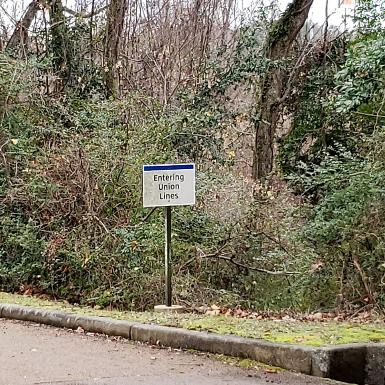
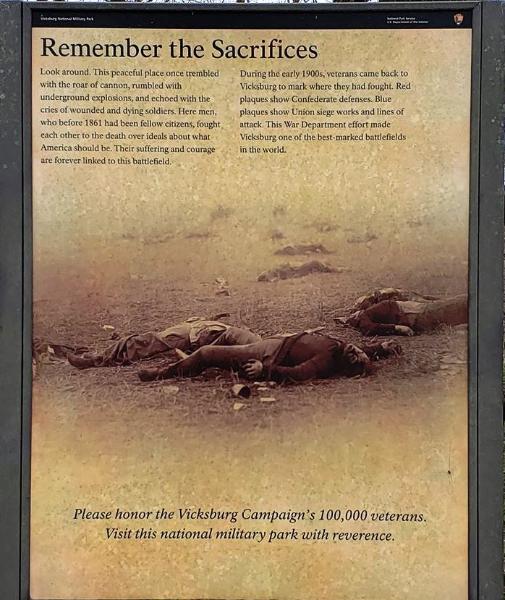
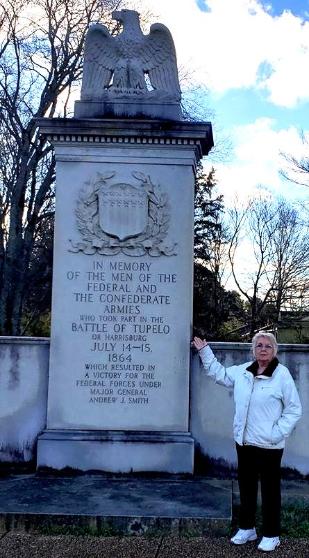
His regiment left Wisconsin on
the 12th of November for
Memphis, Tennessee where they
joined met up with Sherman's
army, losing 30 enlisted men,
two officers and 167 men died
from disease . From there joined
Grant's Southward Movement.
The expedition was abandoned
and they returned to Memphis.
From there they moved on an
expedition
to the Cold Water River,onto
Vicksburg. Then moved to
Natchez, returning afterwards to
participate in the Siege of
Vicksburg, known as the Red
River Campaign. Then
to Camargo Cross Roads , on
to Tupelo, Mississippi where my
Gt. Grandfather was mortally
wounded. The 33rd then moved
on to Brownsville, Arkansas in
pursuit of
General Price into Missouri. Then
on to Nashville where they fought
in the Battle of Nashville; down to
New Orleans ,- Campaign of
Mobile - Spanish Fort and the
capture of Fort Blakely.
On the battlefield of Tupelo,
Mississippi James Coleman
was fatally wounded.
the 12th of November for
Memphis, Tennessee where they
joined met up with Sherman's
army, losing 30 enlisted men,
two officers and 167 men died
from disease . From there joined
Grant's Southward Movement.
The expedition was abandoned
and they returned to Memphis.
From there they moved on an
expedition
to the Cold Water River,onto
Vicksburg. Then moved to
Natchez, returning afterwards to
participate in the Siege of
Vicksburg, known as the Red
River Campaign. Then
to Camargo Cross Roads , on
to Tupelo, Mississippi where my
Gt. Grandfather was mortally
wounded. The 33rd then moved
on to Brownsville, Arkansas in
pursuit of
General Price into Missouri. Then
on to Nashville where they fought
in the Battle of Nashville; down to
New Orleans ,- Campaign of
Mobile - Spanish Fort and the
capture of Fort Blakely.
On the battlefield of Tupelo,
Mississippi James Coleman
was fatally wounded.
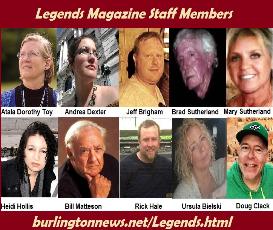
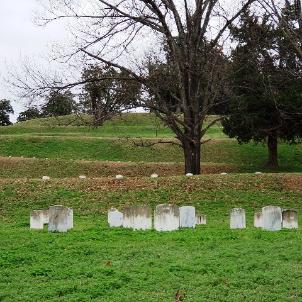
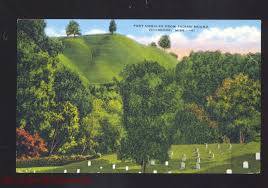
| Civil War Battlefield Cemetery of Vicksburg ,Mississippi sitting atop an ancient Platform Mound, built by an ancient forgotten people known today as the Mound Builders. |
| Post card of the same battlefield cemetery, just at a different angle. |
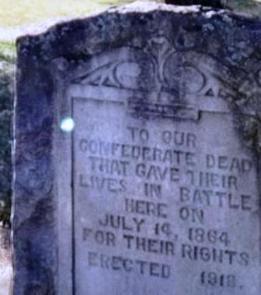
| Memorial stone Brad Sutherland photographed it at the Tupelo Battlefield in Mississippi |
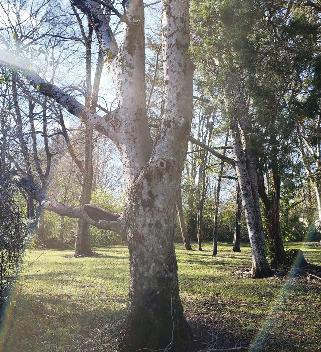
Tupelo Mississippi Battlefield still shares the
residue of the July 14th Civil War Battle; also
known as the Battle of Harrisburg. Photo by
Mary Sutherland
residue of the July 14th Civil War Battle; also
known as the Battle of Harrisburg. Photo by
Mary Sutherland
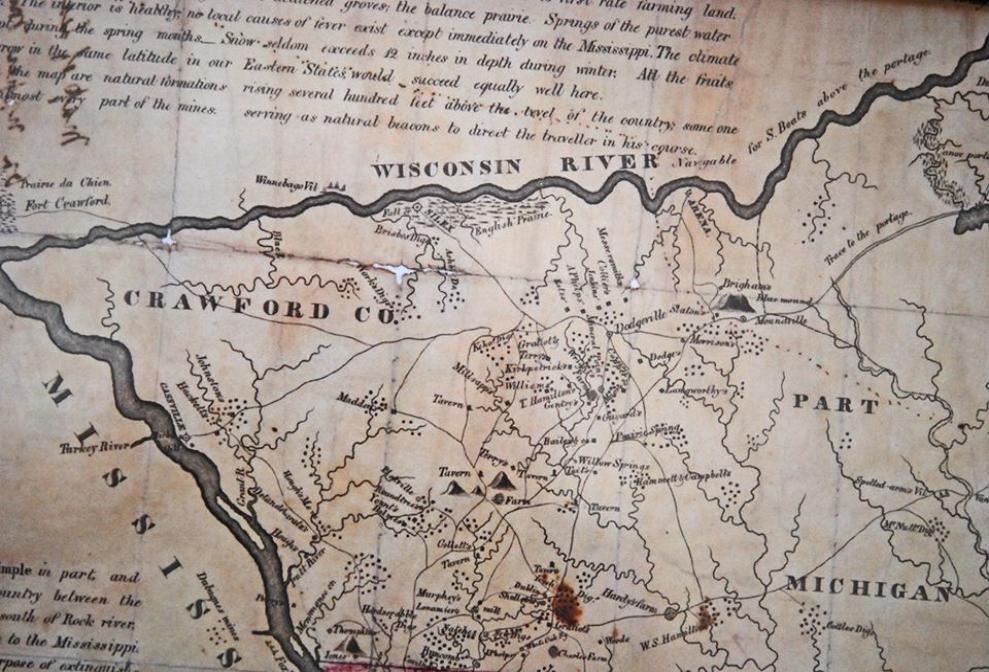
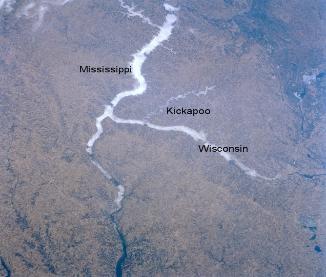
Lead Mining in the Kickapoo Valley and Surrounding Areas.
Check out map below provided by Betty Mindham
The following map was printed in 1829 from hand drawings of maps of lead miners and
probably trappers, too. Copies (used to be) available from Wis Historical Society. In an
assortment of sizes and costs. The actual map is huge area, this is just a little spot of it.
The many dots on the map are lead diggings. The Indian village is marked, but where it
was is puzzling.. I tried to include more area in this copy but not sure if I did or not.
There are places not marked on the map, i.e. Boscobel and Gays Mills. However both
had mines. When I was just a wee one, my dad took me to an abandoned caved in lead
mine in Gays Mills, atop a hill , across from the fairgrounds.
He told me the story of when the Native American Indians worked in consolidation with
the white traders in the area. The women worked down inside the mine and would bring
the ore top side for their men to then pack over the hill near Seneca, down to the
Mississippi River where the ore would be loaded on barges and shipped south.
One day the mine caved in , killing all the women inside. Although it probably could have
been dug out, the Indian party refused to do so, thinking that evil spirits had caused the
cave in . The mine never was reopened.
Dad also cautioned me never to go there alone and that the mine now was a rattlesnake
pit.
----------------------------------------
On the map you see the town of Silex marked near English Prairie. Looks like there is a
road (rail) to it coming from the major road that goes through The name Silica means
'ground stone'. I wonder if Seneca is a variation of the word Silica?
According to Rock Chamberlain, The word "silex" was previously used to refer to flint and
chert and sometimes other hard rocks. In Latin "silex" originally referred to any hard rock,
although now it often refers specifically to flint. .. which was very important if your gun was
a flintlock...
Before it was officially even a town. Muscoda , had a lead smelter running in competition
to Galena, Illinois, which had the monopoly in the smelting business for a very long time
during the boon..
Check out map below provided by Betty Mindham
The following map was printed in 1829 from hand drawings of maps of lead miners and
probably trappers, too. Copies (used to be) available from Wis Historical Society. In an
assortment of sizes and costs. The actual map is huge area, this is just a little spot of it.
The many dots on the map are lead diggings. The Indian village is marked, but where it
was is puzzling.. I tried to include more area in this copy but not sure if I did or not.
There are places not marked on the map, i.e. Boscobel and Gays Mills. However both
had mines. When I was just a wee one, my dad took me to an abandoned caved in lead
mine in Gays Mills, atop a hill , across from the fairgrounds.
He told me the story of when the Native American Indians worked in consolidation with
the white traders in the area. The women worked down inside the mine and would bring
the ore top side for their men to then pack over the hill near Seneca, down to the
Mississippi River where the ore would be loaded on barges and shipped south.
One day the mine caved in , killing all the women inside. Although it probably could have
been dug out, the Indian party refused to do so, thinking that evil spirits had caused the
cave in . The mine never was reopened.
Dad also cautioned me never to go there alone and that the mine now was a rattlesnake
pit.
----------------------------------------
On the map you see the town of Silex marked near English Prairie. Looks like there is a
road (rail) to it coming from the major road that goes through The name Silica means
'ground stone'. I wonder if Seneca is a variation of the word Silica?
According to Rock Chamberlain, The word "silex" was previously used to refer to flint and
chert and sometimes other hard rocks. In Latin "silex" originally referred to any hard rock,
although now it often refers specifically to flint. .. which was very important if your gun was
a flintlock...
Before it was officially even a town. Muscoda , had a lead smelter running in competition
to Galena, Illinois, which had the monopoly in the smelting business for a very long time
during the boon..
Finding Ancient Rivers for Artifacts Fossil Stream Courses Within the Cuesta
Ancient stream gravels at Seneca in Crawford County, Windrow Bluff in Monroe County, the Baraboo Bluffs, and upwards of a dozen
other places in adjacent parts of Wisconsin . . . Preserve evidence of former river courses. The gravels appear to have been laid
down 50 to 60 million years ago in creek bottoms and river flats. One of these streams lay parallel to and west of the present
Kickapoo River.
Ancient stream gravels at Seneca in Crawford County, Windrow Bluff in Monroe County, the Baraboo Bluffs, and upwards of a dozen
other places in adjacent parts of Wisconsin . . . Preserve evidence of former river courses. The gravels appear to have been laid
down 50 to 60 million years ago in creek bottoms and river flats. One of these streams lay parallel to and west of the present
Kickapoo River.
With the discovery of a cave found in Viola,we do know that ancient travelers used the Kickapoo River as a means of
transportation and discovery. This is a photo of what was found there .
transportation and discovery. This is a photo of what was found there .
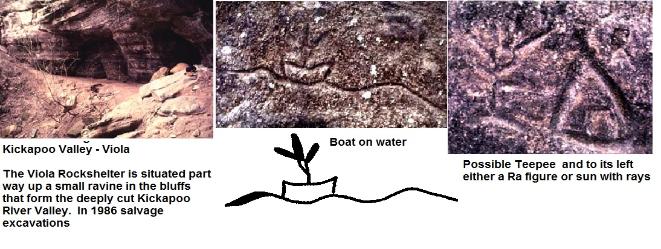
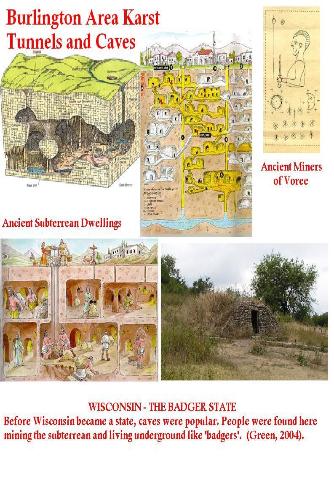
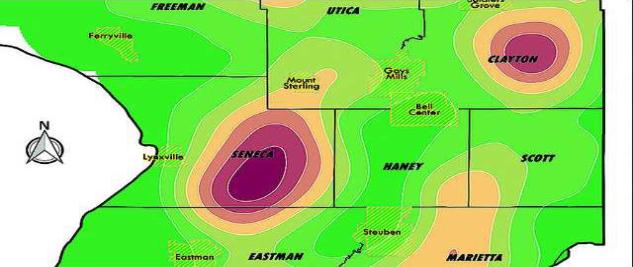
Surrounding the Gays Mills Area is a large Karst System... lying between the Mississippi and Wisconsin Rivers. What hasn't been found is the expected cave system. It probably has
been discovered but lost in time , as generations that knew died off without telling the coming generations.. or they told them, and no one listened...
KARTS OF WISCONSIN
The karsts of Southeastern Wisconsin have created a landscape of rolling hills, mounds with shafts, tunnels, caves and sinkholes. The karsts were created by groundwater
dissolving the sedimentary broken up by an underground vortex of spinning energy. Over millions of years, as flow routes are enlarged, carbonate aquifers change from diffuse-flow
aquifers with water moving as laminar flow through small openings, to conduit-flow aquifers with water moving primarily as turbulent flow through well-developed conduit systems to
discharge points at springs. As the water table lowers below the level of surface streams, the streams begin to lose water to developing cave systems below.
been discovered but lost in time , as generations that knew died off without telling the coming generations.. or they told them, and no one listened...
KARTS OF WISCONSIN
The karsts of Southeastern Wisconsin have created a landscape of rolling hills, mounds with shafts, tunnels, caves and sinkholes. The karsts were created by groundwater
dissolving the sedimentary broken up by an underground vortex of spinning energy. Over millions of years, as flow routes are enlarged, carbonate aquifers change from diffuse-flow
aquifers with water moving as laminar flow through small openings, to conduit-flow aquifers with water moving primarily as turbulent flow through well-developed conduit systems to
discharge points at springs. As the water table lowers below the level of surface streams, the streams begin to lose water to developing cave systems below.
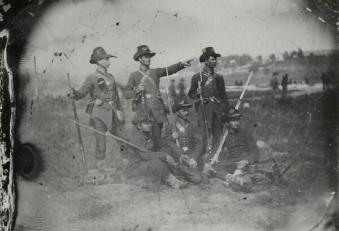
Six Wisconsin soldiers with the Iron Brigade, Civil War photo.
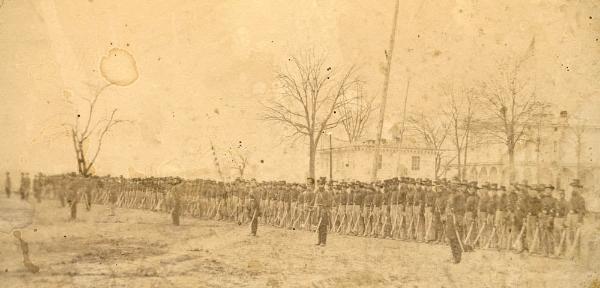
Civil War - Milwaukee's 2nd Wisconsin Cavalry at Benton Barracks, Missouri. From the Internet: The 2nd
Wisconsin Cavalry was organized at Milwaukee between December 1861 and March 1862 and left Wisconsin
for St. Louis, Missouri, on March 24, 1862. During the war it served in Missouri, Arkansas, Tennessee,
Mississippi, Louisiana and finally Texas, where it was mustered out on November 15, 1865.. .
Wisconsin Cavalry was organized at Milwaukee between December 1861 and March 1862 and left Wisconsin
for St. Louis, Missouri, on March 24, 1862. During the war it served in Missouri, Arkansas, Tennessee,
Mississippi, Louisiana and finally Texas, where it was mustered out on November 15, 1865.. .
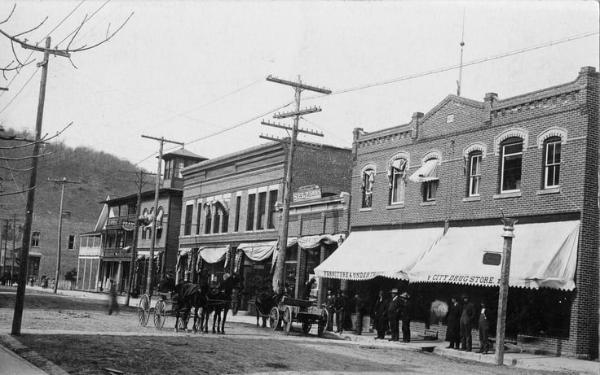
| Soldiers Grove Wisconsin |
